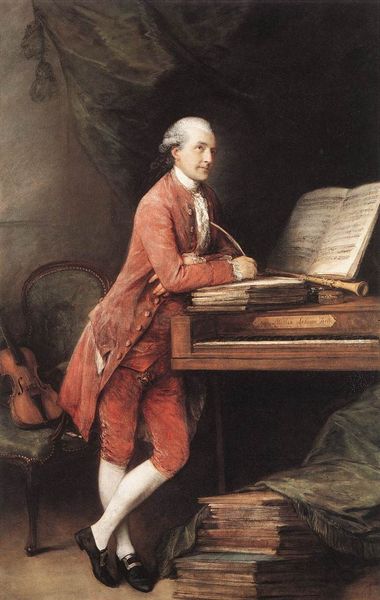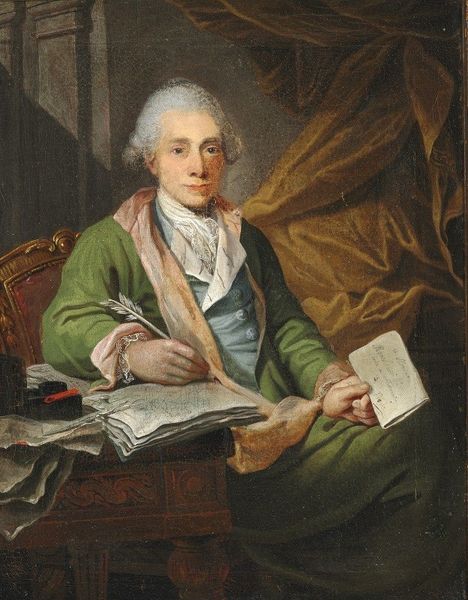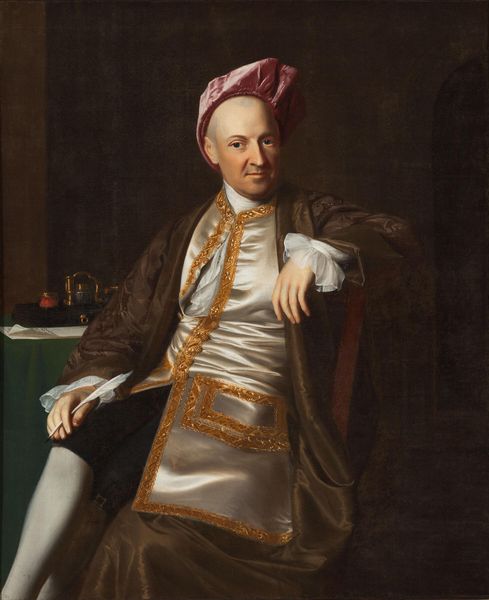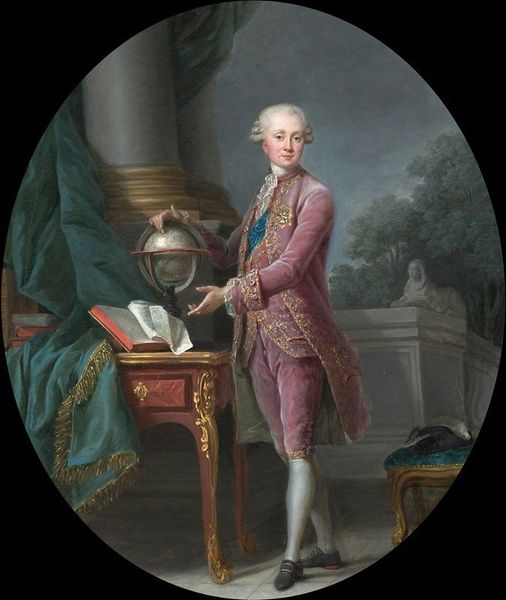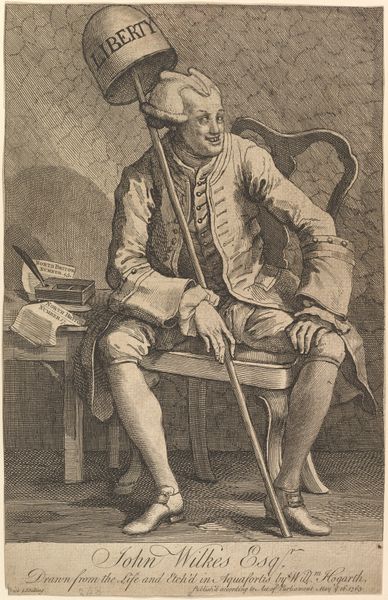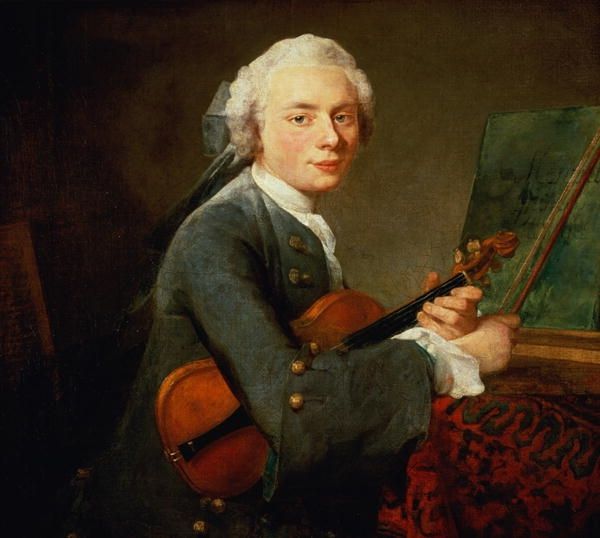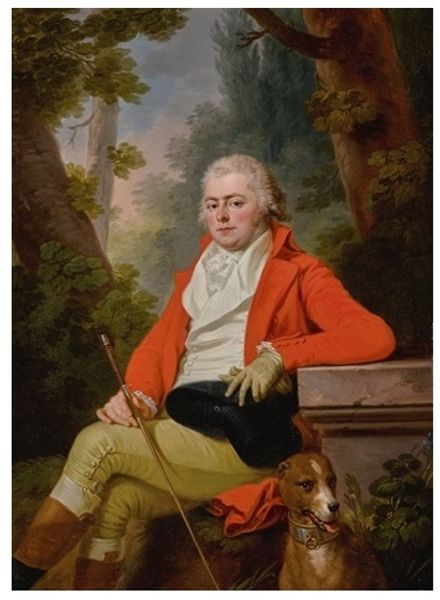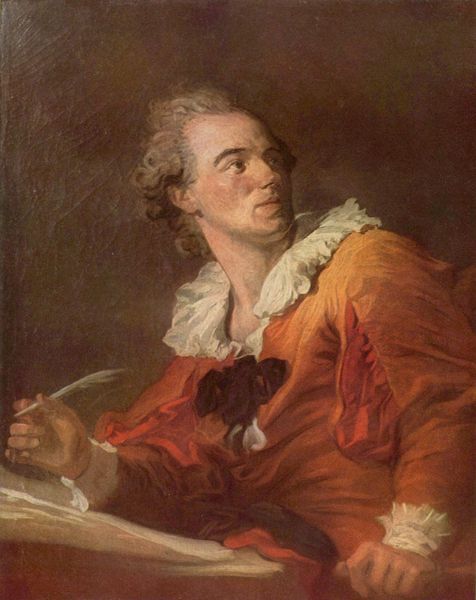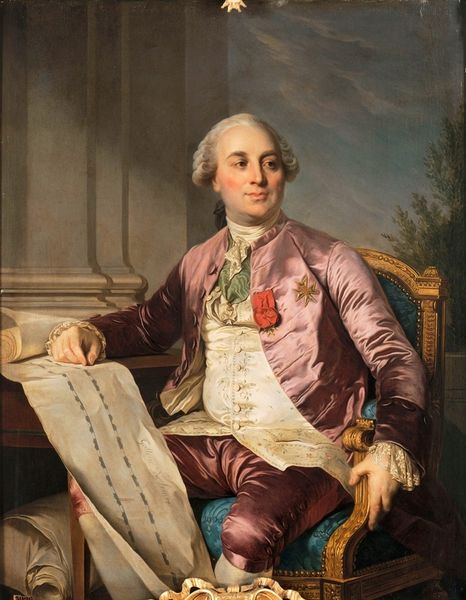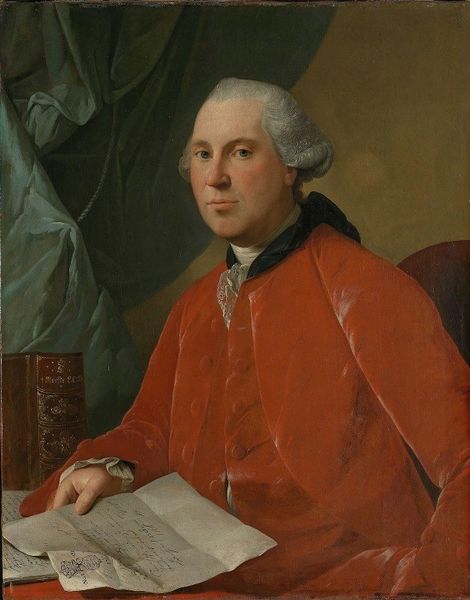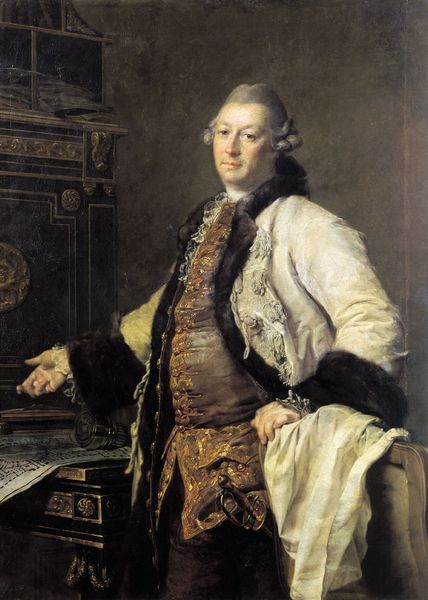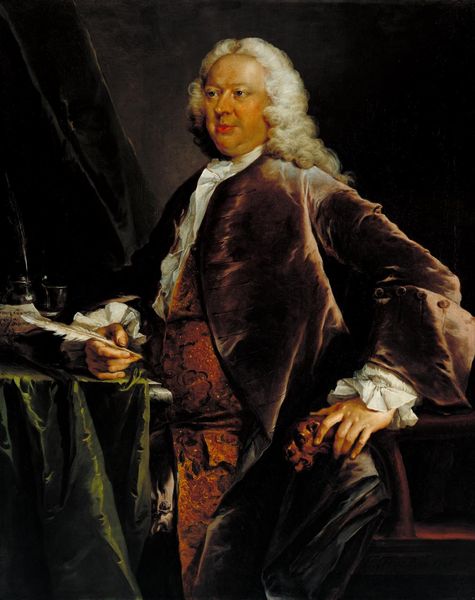
Dimensions: 223.5 x 147.3 cm
Copyright: Public domain
Curator: This is Thomas Gainsborough’s portrait of Carl Friedrich Abel, painted in 1777. The medium is oil on canvas. My initial thought? Utter tranquility. Editor: And yet, doesn’t that tranquility feel a little…forced? Abel, dressed in elaborate clothing, pauses from writing music to meet our gaze, his viol leaning casually against his chair and even his little dog is perfectly placed in the composition, almost as if to say "look at me, how wonderfully relaxed I am". It seems performative somehow, rather than genuine. Curator: That's interesting, and certainly a valid point. It strikes me more as an elegant, idealized vision. The light catches the gold embroidery on his jacket and illuminates his wig, lending him an almost ethereal quality. But I take your point about the dog! Perhaps it is indeed a carefully curated persona he's putting forth. Editor: Right, and the question is, who is this performance for? Composers in this era operated within complex networks of patronage, and self-presentation was key. Abel, a virtuoso performer, cultivated connections within the aristocracy; in fact he co-founded the famed Bach-Abel concerts with Johann Christian Bach that had a significant impact on women performers and audience members at the time. Perhaps this portrait is less about "tranquility," and more about signalling "success". Curator: I agree. It makes me ponder, how do we want to be seen, versus who are we deep inside? The romance of the quill, the music, the sweet dog… it is a persona to an extent. But also, Gainsborough’s feathery brushstrokes are sublime, they hint at the inner sensitivity regardless. You can sense the musician in the pose. Editor: Absolutely, the artifice and genuine creative impulse exist simultaneously, don’t they? This interplay makes me wonder about other portraitures of prominent people from this era: Were their portraits authentic portrayals of their lives or just part of the game? Curator: Perhaps it’s always both. Thank you for that wonderful perspective. It always seems like the painting is trying to whisper you something different. Editor: Likewise, thank you! It has truly deepened my engagement to reconsider how our perspectives actively engage with visual expressions from history.
Comments
No comments
Be the first to comment and join the conversation on the ultimate creative platform.
